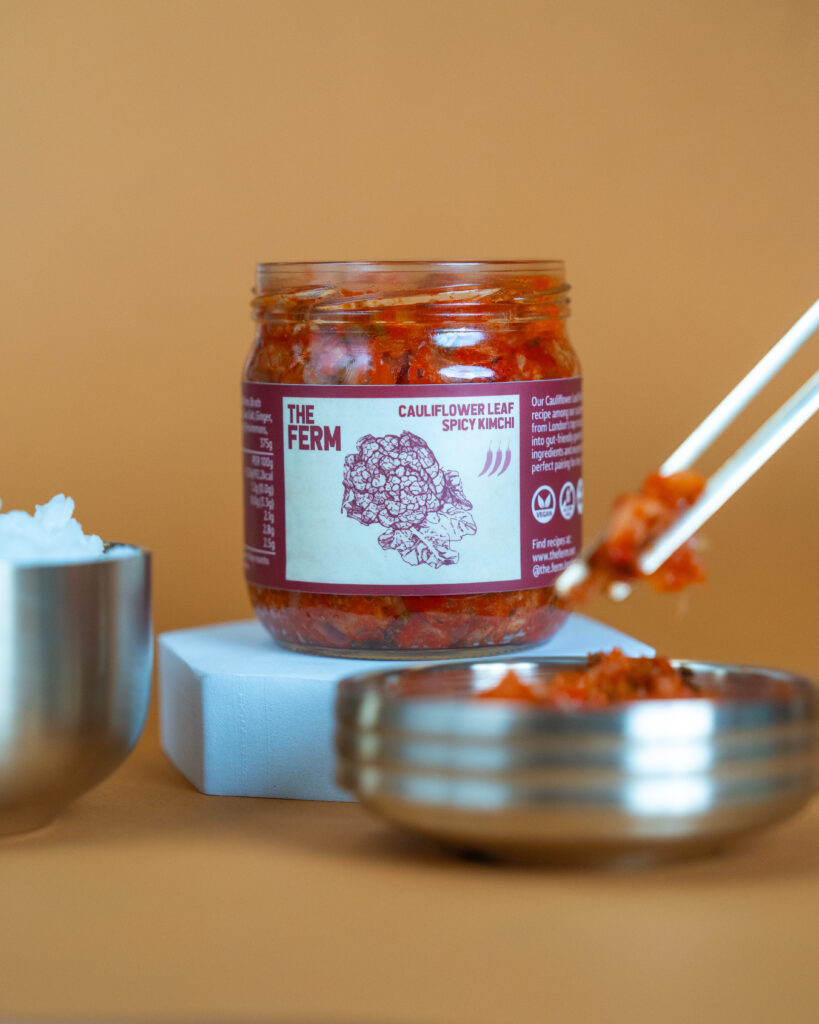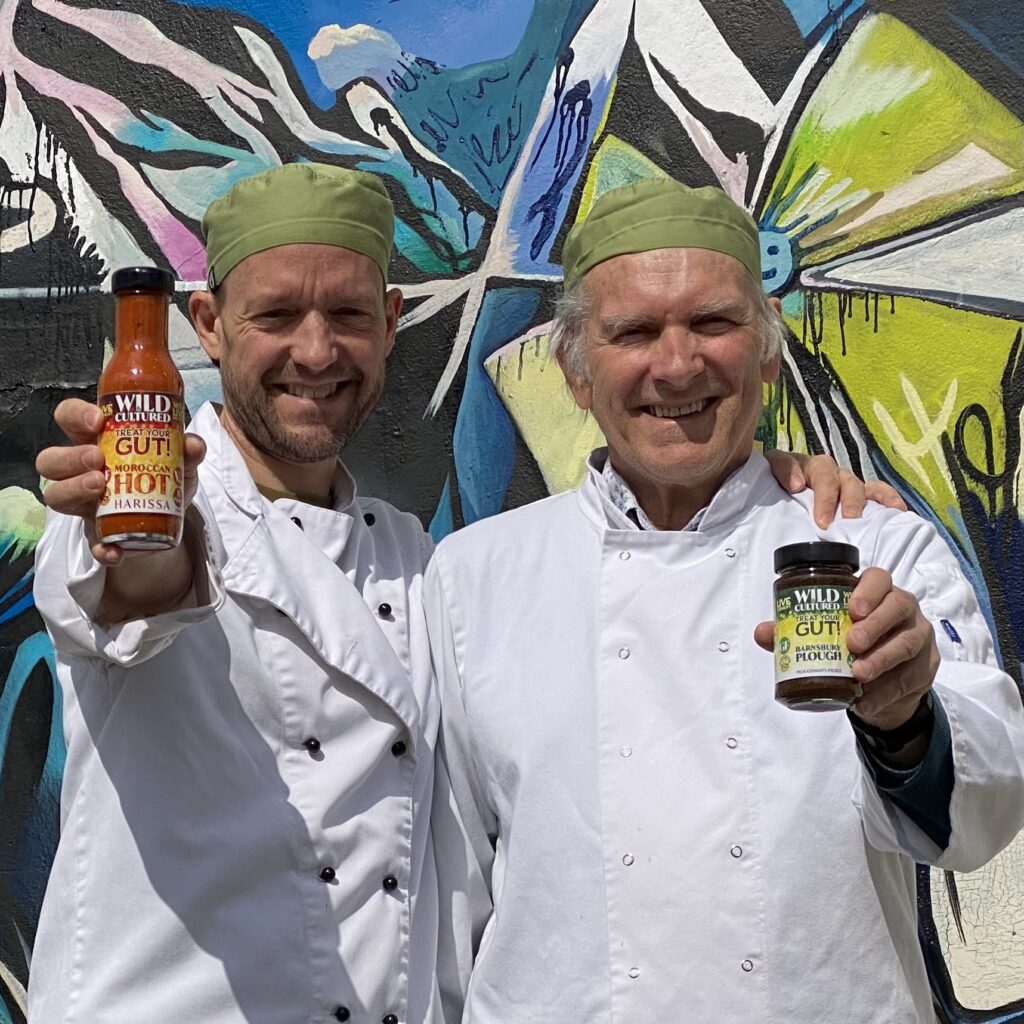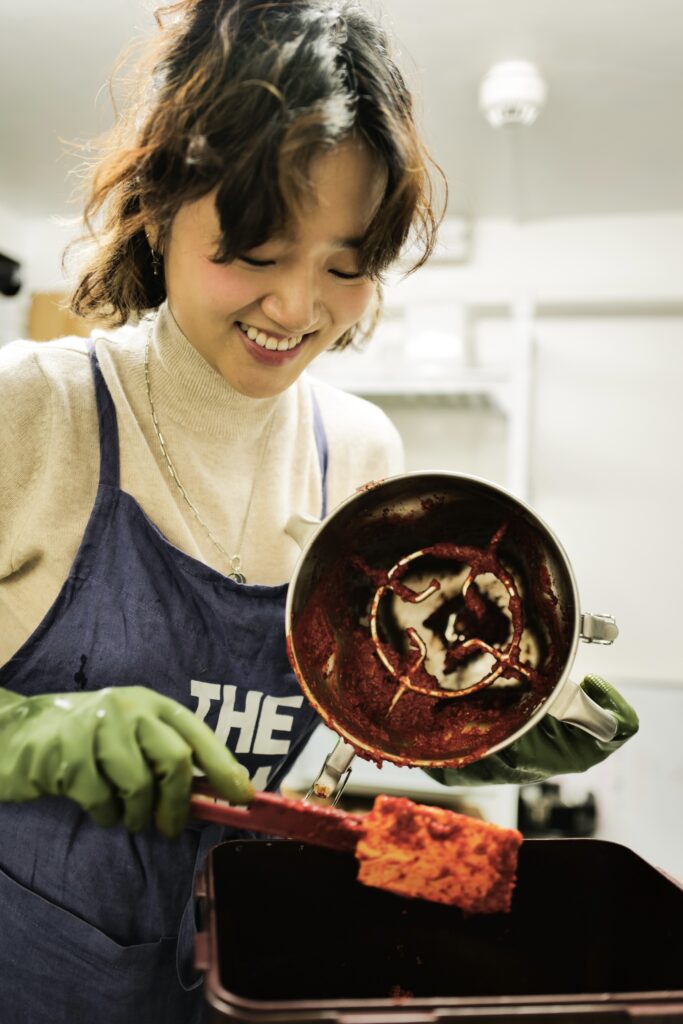Fermented condiments have given Keir Boxshall his health back. Kimchi is a gift of freedom and opportunity for Rebecca Ghim. And Miso is a way of bottling time for Jonathan Hope.
The stories behind these fermented foods are unique. You can’t mass produce these types of impact. Well, you kind of can try – and, of course, we do – but the results are a world apart.
Let’s start at the beginning.

What exactly are fermented foods?
Fermentation is an age-old process of preserving foods that is good for your gut health because it increases bioavailability of nutrients of the food and creates good bacteria [1].
Time is a key ingredient in all fermentation processes, which is what helps to give them their depth of flavour.
“Working in kitchens in London, you’re always under pressure to move faster and you don’t really have time to think. With fermentation it’s important that you’re patient because it moves at a very different pace,” says chef Jonathan Hope.
Recipe-wise, the other ingredients depend on the type of fermentation you’re doing.
Sauerkraut, Kimchi and Kefir are made using lacto-fermentation. Alcohol fermentation, where yeasts turn sugar into alcohol, is used for beer, wine, kombucha and bread such as sourdough. But, you won’t get drunk off of kombucha or bread – the alcohol in kombucha is usually very low, typically below 0.5%, so it’s considered to be non-alcoholic and baking burns off the alcohol in bread. Finally, acetic acid fermentation is used for vinegars.
When you take the time to ferment foods in the right way, they are alive.
Keir explains: “All our ferments are brimming with life, we literally have our Ketchup on the living room ceiling to prove it. We opened the bottle after keeping it out all day at a BBQ which meant the microbes had warmed up and re-started the fermentation process – C02 is created as a bi-product, pressuring the bottle…”
It is this aliveness that sets artisanal fermented foods apart from more industrially-produced fermented products you can find in supermarkets. Factory-produced fermented products are often pasteurised or contain high amounts of vinegar, which essentially kills a lot of the bacteria that’s so good for you.

Improve gut health with Ketchup | Wild and Cultured
Severe stress-related health issues took Keir on a journey of learning about immunity that led him to focus on the gut microbiome. Increasing the biodiversity of microbes in the gut is his primary concern when it comes to creating his condiments.
There are many studies that show eating fermented products is associated with an array of health benefits, such as anti-hypertensive, anti-inflammatory, anti-diabetic, anti-carcinogenic and anti-allergenic [2]. There’s even studies that demonstrate how fermented foods have anti-aging capacity [1].
“Because I have a science and engineering background I geeked out on the science of it,” Keir says. “I started making every type of ferment that you could think of to improve my microbiome, and I feel the benefits – my disorder [achalasia] is under control, my cholesterol is through the floor, my blood pressure is that of a 20-year-old, my skin and hair look healthier, and I feel better.”
He firmly believes this is due to the power of having fermented foods with almost every meal – which Keir largely achieves through his array of organic condiments, including Ketchup, Barbeque Sauce, Ploughman’s Pickle and, more recently, Sweet Chilli and Moroccan Hot Lemon Harissa.
This not only means he’s removed ultra-processed, sugary condiments from his diet, it means he’s feeding his gut with up to two billion bacteria strains with every tablespoon, which is important because the yard stick of gut health is how many different species of good bacteria you’ve got in there.

Nurture with Kimchi | The Ferm
Beyond health benefits for the individual, fermentation can offer collective benefits for society, too.
Rebecca maintains that making Kimchi has historically been linked to different types of protest and resistance and today, in the UK, it is a way of resisting the modern and unhealthy fast food system.
Her zero-waste Kimchi is produced with the byproducts of vegetables that restaurants and catering companies leave behind.
“I think fermentation is a courageous act, especially in a market where ultra-processed foods and sanitised products are so popular,” she says.
But, it’s resistance with nurture at its heart: “You create the right environment for the microbes and then you trust them to do their work. Then you nurture those you feed with it.”
Rebecca is making a London regional Kimchi, with cauliflower leaves, broccoli stems, beet tops and other beloved overlooked ingredients that are available here.
“Kimchi has given me freedom and opportunity,” she says, describing how her UK visa is linked to her Kimchi business. But, for the women of Rebecca’s family it was more a feature of oppression. Making Kimchi is an arduous process and Korean women traditionally had to give up education and work opportunities to cook for men, with her grandmother often getting ill after days of making Kimchi outside in the cold.
Today, Rebecca uses the family recipes she learnt while growing up and making Kimchi with her grandmother and aunties. For her, it’s important not to take shortcuts that compromise its integrity or the umami flavour. As such, her Kimchi includes home-made cheong, a Korean pear syrup, that she takes two years to ferment.
“I’m trying to honour their sacrifice and their stories,” she says.

Bottle time with Scottish Miso | Kultured
Jonathan Hope is also trying to be true to the Japanese artistry and techniques of making Miso, while using Scottish ingredients. His ambition is to do with Miso what the Japanese have done with whisky. “Now, Japan is an area of the world that’s seen as a place of great whisky. Wouldn’t it be amazing to have Scotland as a unique place where you can source Miso?” he says.
According to Jonathan, Miso is the “king of all ferments” because it uses fungal, bacterial and yeast fermentation. He explains: “If you make Miso in the traditional way you have this whole orchestra of flavour, because you’re tasting everything at once.”
His Miso is made from organic, gluten-free oats to grow Koji, the fermentation starter that breaks down the starches and proteins in British peas (rather than soybeans) into sugars and amino acids – the process that gives Miso its deep flavour.
Jonathan has spent years learning about ferments and his Miso spends twelve months in Scottish oak barrels. “We’re essentially bottling time and giving it to people,” he says.
Therefore, simply smearing Miso over vegetables after you steam them, or adding a small amount into scrambled eggs is a way to instantly elevate the dish. “It’s essentially fancy salt,” he insists. “Use it anywhere you would use salt and pepper. It’s actually good value for money, because you only need a very small amount of it. I’m always telling people to use less, because it’s so flavourful.”
How to store fermented foods: Fermented products can never go off in the traditional sense, but they will change colour and grow more sour if they continue to ferment. It’s why they need to be stored in the fridge, to slow the fermentation down. It’s also important to keep oxygen to a minimum – so it’s a good idea to move the product to a smaller jar as you use it up.
References
[1] https://www.sciencedirect.com/science/article/abs/pii/S0963996920302945
[2] https://www.sciencedirect.com/science/article/pii/S0092867421007546


